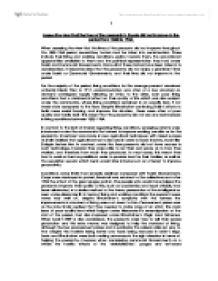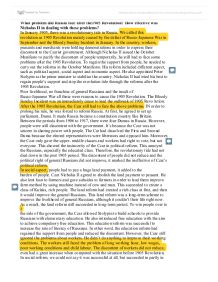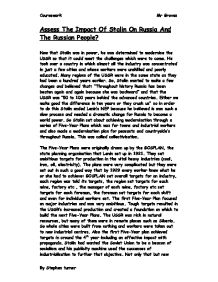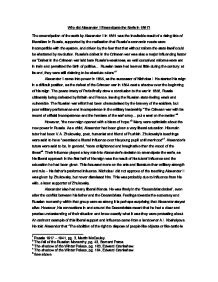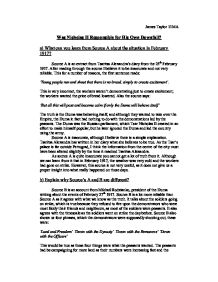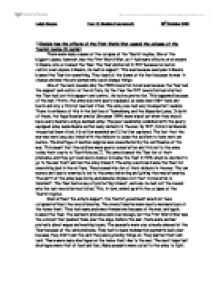Russia 1905-1941
Russia 1905-1941
At the start of the twentieth century, Russia was ruled as an autocracy with all power concentrated in hands of one individual, the Tsar Nicholas II. Nicholas was the last tsar of Russia and a member of the Romanov dynasty that had ruled the nation through hereditary divine right since 1644. His authority was profoundly shaken by widespread rebellion in 1905 but through a combination of constitutional reform and harsh repression, he managed to maintain his position. Yet, in 1917, as Russia crumbled under the profound pressure of fighting the First World War, Nicholas II was forced to abdicate and replaced by a provisional government who aimed to rule until democratic elections could be held to create a parliament. Instead, the tsar’s replacements were overthrown nine months later by Vladimir Lenin’s Bolshevik party, who proclaimed that Russia was now a communist state, the ‘Soviet Union’.
The October Revolution had a profound impact internationally as well as within Russia itself, with many historians proclaiming it the most significant event of the twentieth century. Russia’s old hierarchy was swept away and replaced by a new ideological system that advocated the rule of the proletariat (or working classes) in order to create a communist utopia. Lenin’s ability to execute his vision was hampered by widespread opposition that led to civil war and his rule ushered in new freedoms in some areas whilst restricting it profoundly in others. After his death, Josef Stalin emerged as leader following a bitter power struggle and the Soviet Union was once again transformed as Stalin increased his control to new dictatorial levels whilst modernising the nation’s economy. Despite the profound human cost of Stalinism, the economic and technological progress made in these years enabled the Soviet Union to withstand (and eventually defeat) the Nazi invasion of 1941.
Learn about Russia 1905-1941
- CHRONOLOGY - Get an overview of the key years 1905-1941 and the associated rise of Soviet power
- KEY INDIVIDUALS - From Nicholas II to Josef Stalin - learn more about the key figures of Russian political power in the 20th Century
- KEY DEBATES - Understand some of the key debates surrounding the October Revolution and beyond
Essays on Russia between 1905-1941
Use our dedicated Study Guide to understand more about Russian History, and get ideas to make your own essays and coursework stand out.
Assess the view that the lives of the peasants in Russia did not improve in the period from 1855 to 1964.
Assess the view that the lives of the peasants in Russia did not improve in the period from 1855 to 1964. When assessing the view that the lives of the...
What problem did Russia face after the1905 Revolution? How effective was Nicholas II in dealing with these problems?
What problem did Russia face after the1905 Revolution? How effective was Nicholas II in dealing with these problems? In January 1905, there was a revolutionary...
Assess The Impact Of Stalin On Russia And The Russian People.
Assess The Impact Of Stalin On Russia And The Russian People? Now that Stalin was in power, he was determined to modernise the USSR so that it...
Why did Alexander II Emancipate the Serfs in 1861?
Why did Alexander II Emancipate the Serfs in 1861? The emancipation of the serfs by Alexander II in 1861 was the inevitable result of a rising tide of liberalism...
Was Nicholas II Responsible for His Own Downfall? What can you learn from Source A about the situation in February 1917?
James Taylor 11MA Was Nicholas II Responsible for His Own Downfall? a) What can you learn from Source A about the situation in February 1917? Source...
Explain how the effects of the First World War caused the collapse of the Tsarist regime
1) Explain how the effects of the First World War caused the collapse of the Tsarist regime (8 marks) There were many causes of the collapse of the Tsarist regime. One...


